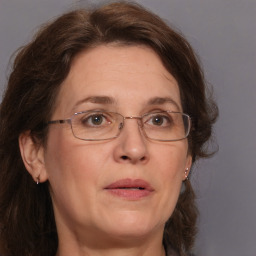This sample will let you know about:
- Discuss about the Role And Process Of Leadership.
- Discuss about the Power And Influence Of Leadership
Introduction to Leadership
Leadership is the ability that is required in an organization that facilitates the proper flow of information and it also ensures proper and efficient delegation of authorities. In a management, motivation is required so that to persuade the employees to play an important role in the workplace. Leader plays an important role in an organization as it provides proper guidance to its subordinates. An efficient work environment helps in sound and stable growth (Adair, 2010). The main function of management is leadership which helps to maximize efficiency and this thereby helps in achieving objectives.
Leadership and motivation are interrelated to each other as leaders are the only persons that motivate the employees so that to increase efficiency in performance level. In this present study, researcher has chosen the ‘U' care organization which is a national charity and having regional manager in their firm. Their role is to co-ordinate a small group of full time staff and volunteers. This report presented some objective on the ground of leadership which has to be fulfilled. Keeping the objectives in mind role, process, power, personality, team development, style and many more n respect of leadership will be discussed (Adair, 2011). At last a conclusion will be drawn out which provide an essence of this report.
Role And Process Of Leadership
It is required to motivate the employees so that to increase job satisfaction and it also encourages productivity. Both the leader and the management of U care organization play a significant role in employee motivation. A leader motivates the employees in such a way that it combines organizational goals with individual goals (Adams, 2012). The role of leaders and managers has been explained as under:
- Understand the factors that motivates employees
- Create a fair system
- Increases the efficiency in performance
- Builds effective communication
- Helps to get high competitive advantage
- Resolves the issues and conflicts
- Fair means of reward system (Alvesson, 2012)
- Improves the productivity of employee and this thereby helps in organizational productivity
Leadership is not an easy task to perform, Infect he/she is the representative of group or organization. Their roles and responsibilities are so high. Roles that they follow are: leaders are liable to manage the operations of team (Adair, 2010). In a group or team leader delegate authorities to their member and work has to be done accordingly. Leader provides proper guidance, supervision and cooperation to their team members if they find any problem in any task. Last is leader deciding the fund that has been required to carry out the work means they prepare the budget?
The leadership model displays four layers or steps in the team leadership model. Those four steps are:
- At the top layer, all members of a team perform and the organization evaluates the performance of the team and determines the effectiveness of the team.
- There is an internal and external analysis of the leadership level at the second stage.
- The third level determines the task, relational and environmental aspects. At this stage the leaders are required to identify the goals and structure of the organization so that to organize training sessions accordingly (Eacott, 2010).
The process of leadership is not an easy task. Leadership is the art whereby a leader by his performance influences others. It is required for the leader to make number of followers so that to bring effective coordination in an organization. In a U care organization, a number of activities are there and it is the main duty of the leader to employ the employee in that place where they can put their best efforts. It is a process whereby the subordinates of an organization follow the given directions framed by their leader. Leadership is not a role; it's a process involving how an individual or a group influences others toward a particular goal or objective. Leadership development occurs across one's life span (Finkelestein and et.al., 2009). Management is more transactional whereas leadership is more visionary or dynamic. In the process of leadership, leader required an art which can help the individual to achieve the objectives of organization as well as individual objectives (Bowerman, 2003).
Power And Influence Of Leadership
Leader is not an ordinary person, he have to have some special skills that differentiate them with others employees. He/she is the person who poses some special power that make them called as leader. Power and influence of leader can be seen in following points shared below: The management of U care organization would be more competitive enough if the power of regional manger follows the steps shared below: (Gitlow, 2004)
Cultural challenges
In an organization there various employees that follow different culture and this is the main reason that creates issues in an organization. It is required for the U care organization to follow the culture of the country so that it does not affect the interest of the society (Griffith and et.al., 2009).
Ethical challenges
It has been seen in several cases that in order to get high appreciation for their organization and even funds, organizations generally involved in unethical practices. So regional manager have to take care that under their supervision this should not be done and should be done with full ethical means.
Difficulty in decision making
In an organization, there are various employees and it is required for the management to take opinions from its employees so that to get suitable advices (Finkelestein and et. al., 2009). Hasty decisions leads to improper functions and this thereby affects the decision making ability. Effectiveness is required so that to take correct decisions. Power and influence can be seen best out there by molding the behavior of employees towards the common aim of organization and further persuade them to become leader's supportive role (Holt and et.al., 2003).
Gender issues
A lot many issues have been seen related to the gender biasness. Equal importance should be given to all the employees so that to remove discrimination. But if the leader with ful confidence educate their employees to not to raise such issues as they are equal for this organization, then the regional manager can more effectively direct the operations and performance of their volunteer and staff (Hughes and Beatty, 2011).
View Samples on coursework, essay, and dissertation
Free Samples
Improper training
There are many employees in a U care organization that requires training as medical services cannot be granted without having proper knowledge (Finkelestein and et.al., 2009). Leader can shoe their power to choose employees for training whose performance are not up to the mark because carefulness in their work may dishearten the underprivileged young people. Efficient training sessions are required so that to increase the efficiency of the employees and this can help the organization to deliver better services (Kanter, 2004).
Time management
Time management is the essential task that requires efficiency. It is the main issue with all the managers that they are not able to manage the activities. So in order to remove the issues, they have to make best use of their power in assessing training regards to time management (Hughes and Beatty, 2011).
Moreover, along with the above discussion power of leadership can also be defined through this chart which explains the power of leadership at each level, they are as under:
Level 1 - Position (Rights)
This is the base level of leadership where the major key is position. On this level people follow their leader as because he is the boss. This level derives fellowship due to the position and authority given to the leader and without these he cannot lead (Mulki and et.al., 2011). This leadership level is fundamentally hierarchical and applied at lower level such as kitchen crew.
Level 2 - Permission (Relationship)
On this level, the leader focuses on building relationship with the people. Leader struggle to develop relationship in order to enhance their leadership, this relationship often results in people wish to follow. Due to this relationship people ultimately starts to like their leader and so as he. So on this level a leader requires the ability to make good relationship with their employees (Osborne and Brown, 2005).
Level 3 - Production (Results)
On this level leader makes an image by his outstanding contribution to the organization. This image facilitates the confidence and positivity in employees and they start taking lessons from it (Mulki and et.al., 2011). On this level leader is seen as the person who can make the things happen, this factor makes the entire atmosphere winning and felling success. This form of fellowship is enjoyed by leaders in commercial organizations when the results of their department are having a regular uptrend (Schein, 2010).
Level 4 - People Development (Reproduction)
On this level employees like to follow their leader due to his contrition in developing them. Leader believes in better performance of employees by their development and so he feels happy because the people are doing better. This development of employees facilitates positive feeling for leader and people follow him with loyalty. Such form of leadership can be seen in academic world (Storey, 2013).
Level 5 - Pinnacle (Respect)
It is the personhood level where people follow the leader because what he is and what he represents. The leaders at level five are believe in building an intuition rather than achieving a single goal (Wart, 2012).
Ways To Motivate Employees
Regional managers have to deal with many personalities in their organization and every personality possesses different views and opinions (Hughes and Beatty, 2011). In that case leadership plays an influential role in motivating the workforce in an organization. In order to increase the productivity and to motivate them for common goal, it is required to know about various theories. Here are some motivational theories that will be showing the importance of motivation at workplace and help regional managers to tackle different personality (Concepts of Leadership, 2010).
Maslow
Maslow believed that the needs of an individual can be expressed in a hierarchical form whereby different needs can be defined. The first need in the hierarchy is the basic needs such as food, cloth and shelter. After satisfying the basic needs, the level of motivation changes and it moves towards the upper needs. Thus, by this Maslow suggest that it is required to identify the needs of employee so that to address them properly (Kotter, 2012). The five levels in need hierarchy are physiological, safety, social, esteem to self actualization needs.
Herzberg
The theory is based upon those facts that lead disappointment. There are several factors that demotivate the employees and the theory identifies the reasons that results in dissatisfaction (Osborne and Brown, 2005). The main factors are concerned with the job of an employee. Other elements are those that affect the work performance and motivation level. Motivation at this stage is required so that to develop the growth aspects and also bring efficiency in work performance (Leadership and Strategy, 2011).
Cognitive theory
Cognitive theory can be classified into three categories and such are equity, goal setting and expectancy theory. All the theory emphasizes on motivating employee by achieving the desired objectives (Leadership and Strategy, 2011).
Power theory
The theory focuses on employee empowerment in which opinions must be taken from the employees at the time of decision making and it also states that proper delegation of duties increases the opportunities of employee growth (Employee Commitment & Productivity Study, 2011).
Development And Efficiency Of Team
An organization can achieve productivity as well as effectiveness when having efficient team members. A team goes through five stages of development. Each stage of team development presents its own special challenges to a group of people striving to work together successfully by forming an organized team. Such stages are mentioned as under:
- Forming: In this stage, a group of people come together so that to accomplish the common objective. The members introduced each other formally.
- Storming: At this stage, the organization combines the team members so that to build effective relationships. Coordination can be achieved at this stage (Leadership Traits, 2010).
- Norming: At this stage, the team members works with coordination so that to achieve organizational goals. At this stage, team members focus on achieving team objectives.
- Performing: At this stage, the team members integrate the work performance with organizational goals so that to identify the effectiveness and functioning of team members.b
- Transforming: The team is performing so well that all the members believe that it is the most successful team that contributes in organizational development (Mumford and Gibson, 2011).
At every stage motivation is also required for the team members so that to retain efficient employees and skills in the organization. A group is different than a team. Team member focuses on achieving overall objectives of an organization whereas groups are formed for the purpose of achieving individual goals. Group dynamics refers to a set of behaviors and psychological processes in a social group (Employee Commitment & Productivity Study, 2011).
Organizational Change
Change basically means to bring the new act or process of making or doing something. It is the universal truth that everything on the earth demand for change whether talks about the people or earth or people behavior. Everything has to be change as per the time, fails to bring the change results in no improvement (Murphy, 2008). No organization can easily introduce a change in their organization, all has gone through difficulties in bringing the change from the side of their employees because employees are freeze to the earlier process and used to with that process. If introduce the change they feel insecure in performing their work and new place, so they restrict the change. So to overcome this problem, U care regional managers have to educate their staff and volunteers about the change from the starting, and educating them about the positive points of change, so that in future they will be ready to accept the change (Schein, 2010).
Leadership Styles
Different styles of leadership have diverse kind of impact on strategic decision of an organization and every style has their own pros and cons, some of them are discussed below:
Autocratic Leadership Style - In an autocratic style of leadership the in-charge person has total authority and control over decision making. It is also known as authoritarian leadership as it clearly explains in the division between workers and leaders. Leaders following this leadership trait do involve in employees in any kind of decision making and leaders have full confidence with the decision making responsibility for organizations operating and strategic planning (Clark, 2010).
Participative Leadership Style - In this style a leader motivates in team members to participate in the decision making process. In this team members feel motivated and encouraged and actively participate in the decision making areas. In this style leaders make the final decision but they involve in team members in the process of decision making and their motivate creativity and tend to provide in job satisfaction to the team members (Corapi, 2012).
Bureaucratic Leadership Style - These leaders work under by the book and they follow responsibilities and make sure that their team members follow procedure superficially. It is an appropriate style of leadership that is mainly preferable when employees undertake routine tasks (Nash and Hwang, 2012). During strategic decision making it is generally not much used because it is ineffective in teams and maximum of time bureaucratic leaders attain their position preferably because of their rules and not of their qualifications (Pike, 2003).
Charismatic Leadership Style - It resembles much of transformational style of leadership as the leaders inspire enthusiasm among the team members and are very much energetic in motivating others to move ahead and achieve the ultimate goal. The leaders using this style are mostly focused on themselves and would not prefer to change anything. In organizational strategic decision making undertakes great responsibility and it leaders following charismatic leadership do not prefer in long commitment for a work (Densten, 2002).
Laissez - Faire Leadership Style - This involves in French phrase in it and it defines the way leaders facilitate their people to work on their own and this kind of leadership mostly occurs naturally and when managers do not have much of control over their people or work. In this style leaders provide in their team members complete freedom to undertake their work and frame their own deadlines. Leaders only offer team support and advice at required point of time and it can be effective if the leader from time to time motivates subordinates and it leads to high job satisfaction and enhanced performance of employees (Pauleen, 2003).
We tend to help you at every step regarding Academic Assistance
Get your Assignments Now!
Complete Participation
To make the event successful one, fund raising event calls for active participation of the members of U care organization like their staff, regional leader and other volunteer. There active participation can only lead them this event as a successful one. Basically this activities are being done for special purpose that is to help under privileged people and the funds that is being collected is also for their purpose like for their medicine, for their livelihood and for their accommodation (Crossman, 2010). Activities that are going to be held from the side of U care are raffles, street collections, social fund raising events and local corporate sponsorships. The efforts of volunteer and staff to perform these activities can be direct only by the regional managers of U care. With their guidance and support only their sub-ordinate will perform which in turn gives fruitful result to U care (Corapi, 2012). To facilitate the participation of staff members and volunteers, leader should go for following points:
Manage motivation: Being a leader it is required for him to arrange motivation programs so that to encourage the employees for fund raising events.
Creating confidence: It is essential for the leader to recognize the performances as this encourages them for participate in activities.
Greater communication: Communication is required at each level as it maintains proper flow of information. With the help of effective communication, employees can able to take out the expected results of events (Feldman, 2013).
CONCLUSION
From the above discussion it can be concluded that strategic leaders are mainly responsible for U care organization and can influence their staff and volunteers. These leaders establish different organizational structure, distribute resources and communicate their strategic vision (Leadership and Strategy, 2011). Strategic leaders need to work in an uncertain environment with highly complex issues that impact on firms. It is the skill that dominates in corporate leaders with more complex and increased uncertainty and an increased number of unintended outcomes.
REFERENCES
- Adair, E., 2010. Strategic Leadership: How to Think and Plan Strategically and Provide Direction. Kogan Page Publishers.
- Adair, J., 2011. Effective Strategic Leadership. Pan Macmillan.
- Adams, A., 2012. Mapping a strategic approach to HR leadership. Strategic HR Review, 11(1), pp.31 - 36.
- Alvesson, M., 2012. Understanding Organizational Culture. SAGE.
- Bowerman, K. J., 2003. Leadership development through action learning: an executive monograph. Leadership in Health Services, 16(4), pp.6 - 14.
- Clark, R. C., 2010. Evidence-based Training Methods: A Guide for Training Professionals. American Society for Training and Development.
- Corapi, R., 2012. Superhero Training Methods. ROBERT CORAPI.
- Crossman, J., 2010. Conceptualising spiritual leadership in secular organizational contexts and its relation to transformational, servant and environmental leadership. Leadership & Organization Development Journal, 31(7), pp.66-89.
- Densten, L. I., 2002. Clarifying inspirational motivation and its relationship to extra effort. Leadership & Organizational Development Journal, 23(1), pp.223-246.
- Eacott, S., 2010. Tenure, functional track and strategic leadership. International Journal of Educational Management, 24(5), pp.448 - 458.














